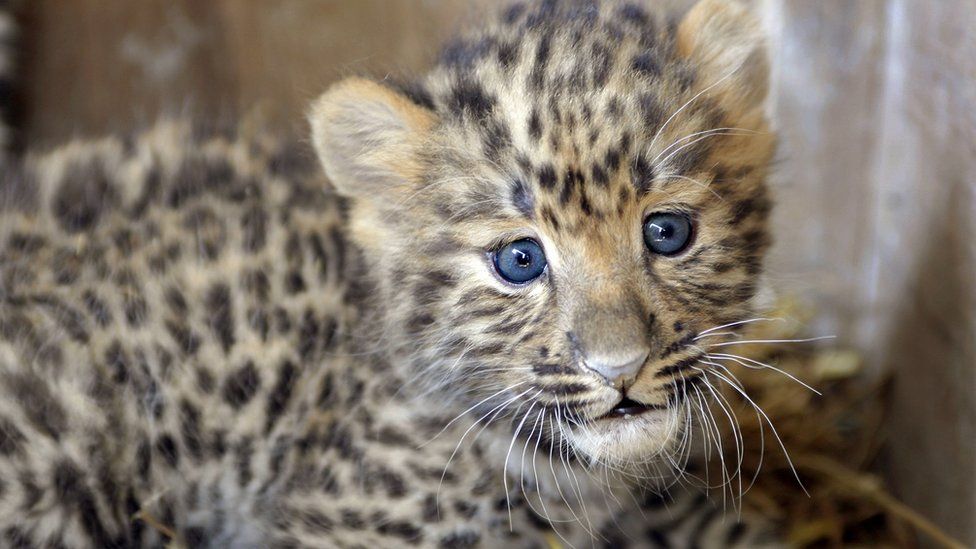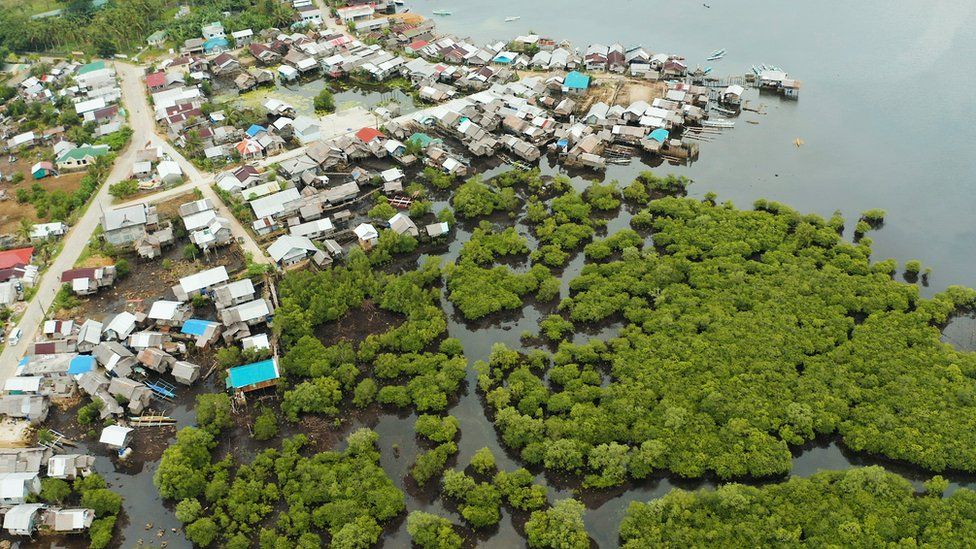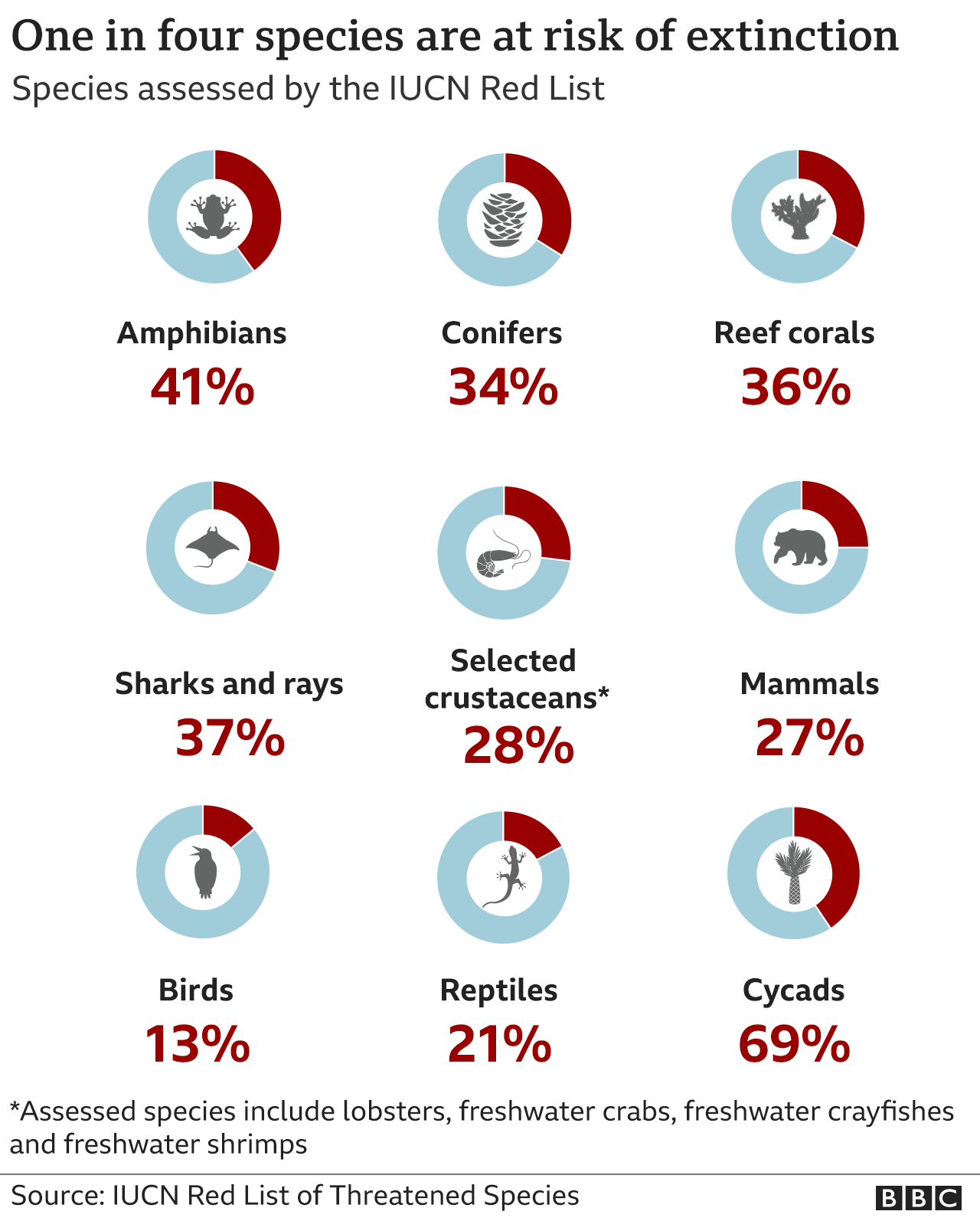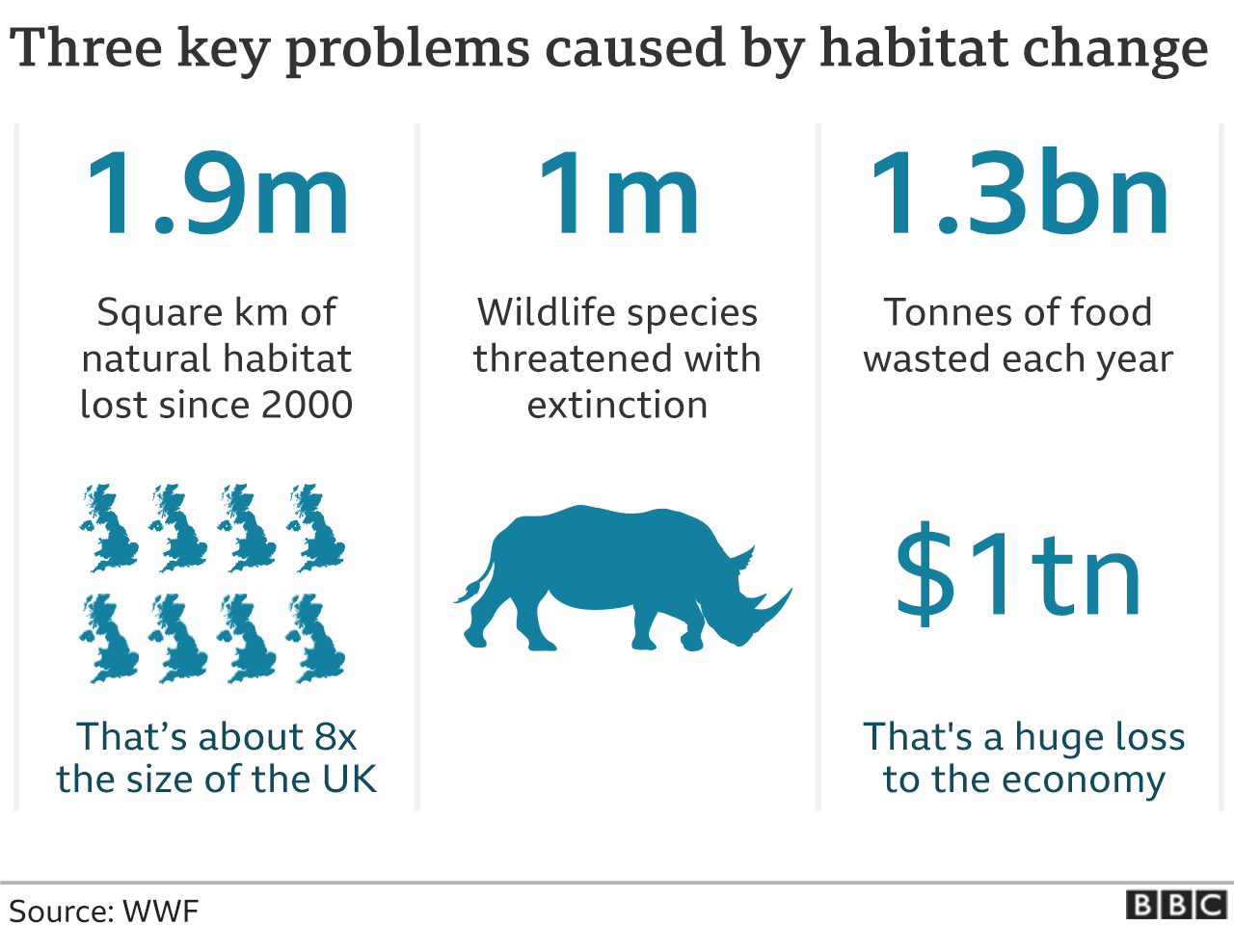What is biodiversity and how are we protecting it?

Amur leopards are one of the most endangered species in the world
Targets to reverse the decline of biodiversity by 2030 may be missed without urgent action, according to a new report.
This goal was a key part of the UN global summit on biodiversity held in December 2022.
Nearly a third of all monitored species are currently endangered due to human activities.
What is biodiversity and why is it important?
Biodiversity is the variety of all life on Earth - animals, plants, fungi and micro-organisms like bacteria.
Animals and plants provide humans with everything necessary for survival - including fresh water, food, and medicines.
However, humans cannot get these benefits from individual species - a rich variety of animals and plants must work together.
Plants are also very important for improving the physical environment: cleaning the air, limiting rising temperatures and providing protection against climate change.

Mangroves provide protection against rising sea levels for towns in the Philippines
Mangrove swamps and coral reefs can act as a barrier to erosion from rising sea levels.
Common trees found in cities such as the London plane or the tulip tree, are excellent at absorbing carbon dioxide and removing pollutants from the air.
How many species are at risk of extinction?
It is normal for species to evolve and become extinct over time - 98% of all species that have ever lived are now extinct.
However, the extinction of species is now happening between 100 and 1,000 times more quickly than scientists would expect.
As a result, many scientists warn humans could be causing the "sixth mass extinction" on Earth.
The International Union for Conservation of Nature (IUCN) has kept a "red list" of threatened species since 1964. More than 150,000 species have been assessed, and 28% are considered to be threatened with extinction.
The UN's biodiversity body - known as IPBES - estimates that at least one million plant and animal species are at risk of extinction.
But the threat of extinction varies enormously. For example, it is estimated that 40% of amphibians (a group that includes frogs and toads) are at risk, but 14% of birds.
In addition, for some groups - such as insects and fungi - not enough species have been evaluated to be able to accurately assess the risk.

What are the biggest threats to biodiversity?
In its most recent report, IPBES highlighted the damage done by harvesting, logging, hunting and overfishing.
Between 2001 and 2021 the world lost 437 million hectares of tree cover - 16% of which was primary forest. The destruction of mature forests, which have taken hundreds - if not thousands - of years to develop, can have a very serious impact on biodiversity.
Biodiversity loss is occurring worldwide, according to the WWF.
It says recent losses have been highest in Latin America and the Caribbean, where animal populations have declined by 94% since 1970, mainly due to habitat destruction and overexploitation.
The Natural History Museum in London says the UK is one of the most nature-depleted countries in Europe, and is in the bottom 10% globally.

The rate of climate change is also increasingly difficult for animals and plants to cope with, the UN warns.
It says that limiting global temperature rises to 1.5°C above preindustrial levels is important to prevent even greater losses of biodiversity.
What have countries agreed to do to tackle the issue?
At the UN's COP15 summit on biodiversity in December 2022, countries reached an "historic" agreement to protect 30% of Earth's land and seas by 2030.
The agreement - known officially as the Kunming-Montreal Global Biodiversity Framework - aims to "halt and reverse" biodiversity's decline by 2030, and for humans to live "in harmony with nature" by 2050 to deliver "benefits essential for all people".
It has four main goals:
- increased conservation of ecosystems and species
- resources used as sustainably as possible
- more equal sharing of natural resources
- increased financial support for biodiversity protection
There are 23 more specific targets for 2030, including mechanisms to sufficiently finance conservation projects. Governments and private organisations are pledging to give at least $200bn (£161bn) per year by 2030.
As part of this richer countries will increase the amount of money they give to poorer countries for biodiversity projects to $30bn per year by 2030.
Although the 2022 framework was not legally binding, signatories committed to demonstrate progress towards meeting biodiversity targets.
Does the UN agreement go far enough?
A study suggests the 2030 targets may already be slipping out of reach because the effects of climate change and habitat loss on animal populations have been underestimated.
Scientists analysed more than 600 different species of birds and mammals.
They found that past modelling work had largely ignored the time lags before effects were seen.
This means biodiversity loss may be more advanced than previously thought, and the report emphasises the need for urgent action.




Recent comments